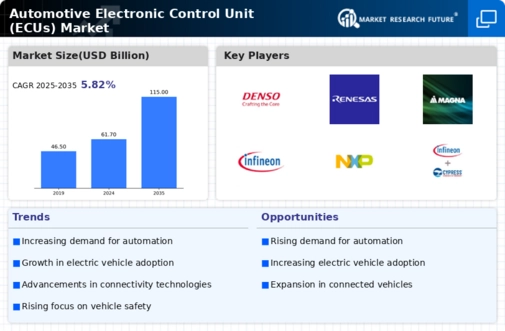Top Industry Leaders in the Automotive Electronic Control Unit Market
*Disclaimer: List of key companies in no particular order
Latest Company Updates:
October 2023- The SDV progresses the vehicle's electronic architecture, making it less costly to produce and faster to develop, employ, and supervise the vehicle's software distantly.
The automotive industry has been transforming from internal combustion engines (ICE) to advanced driver-assistance systems (ADAS) and electric vehicles. The industry has not yet embraced ongoing changes, and it is set to experience another up-and-coming transformation with the shaping and development of software-defined vehicles (SDVs). To explain what an SDV is, let's take a very immediate look at the evolution of vehicle electronics. Starting with the traditional electronic architecture, you have a distributed set of many electronic control units (ECUs). Each is responsible for some specific functionality, such as the engine control module and powertrain control. Communication between ECUs is achieved over a proven, reliable controller area network (CAN) bus.
Then, the integration of ADAS and automated-driving systems evolved the architecture by grouping functionality or specific modules like ECUs, cameras, sensors, radar, and LiDAR into domains. The communication between each domain became severely coupled and relatively large because the central control system—or, in other words, the vehicle computer—can now autonomously control the driving as an alternative to the driver.
Moreover, communication between the central control system and the cloud is a prerequisite for autonomous driving. This change in the automotive architecture has laid the basis for the next evolutionary step into SDVs.
Top listed global companies in the industry are:
- Denso Corporation (Japan)
- Delphi Automotive (Ireland)
- Robert Bosch (Germany)
- Hyundai Mobis (South Korea)
- Continental AG (Germany)
- Lear Corporation (US)
- Automotive Systems (Japan)
- Panasonic Corporation (Japan)
- Magneti Marelli (Italy)
- Pektron Group (UK), and others.










